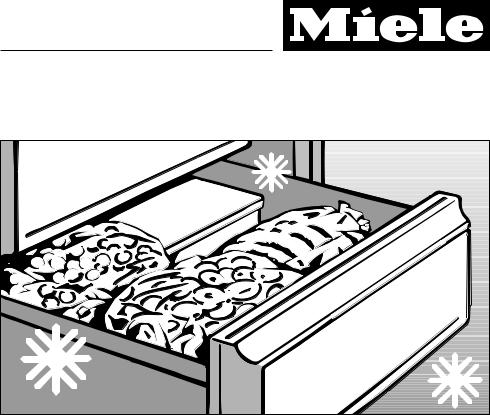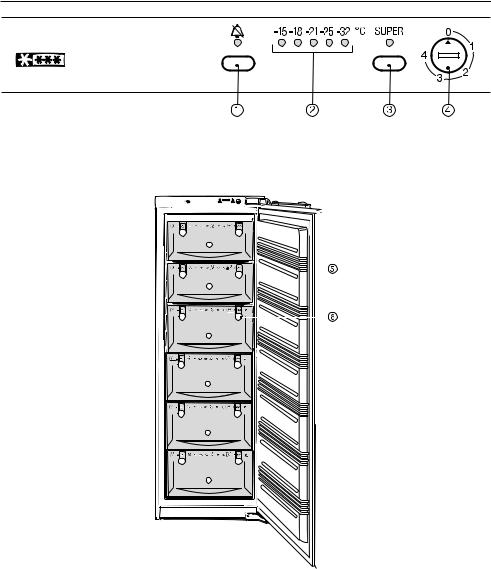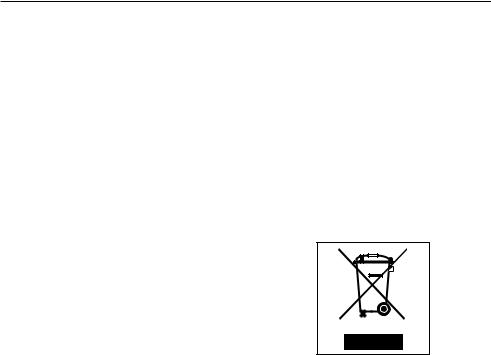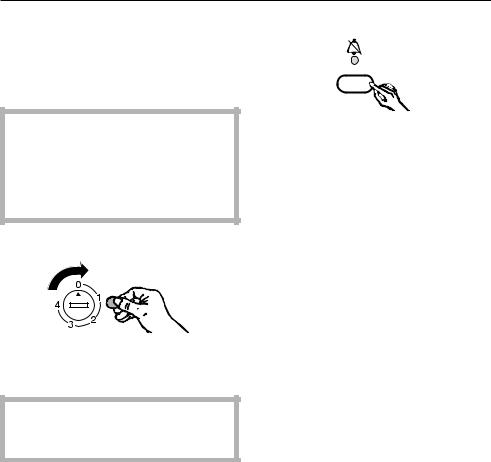Miele F 456 i-3 User Manual

Operating and installation instructions
Freezer |
F 456 i-3 |
To avoid the risk of accidents or damage to the appliance, it is essential to read these instructions before it is installed and used for the first time.
G
M.-Nr. 06 993 960

Contents
Guide to the appliance . . . . . . . . . . . . . . . . . . . . . . . . . . . . . . . . . . . . . . . . . . . . . 4
Caring for the environment . . . . . . . . . . . . . . . . . . . . . . . . . . . . . . . . . . . . . . . . . . 5
Warning and Safety instructions . . . . . . . . . . . . . . . . . . . . . . . . . . . . . . . . . . . . . 6
How to save energy . . . . . . . . . . . . . . . . . . . . . . . . . . . . . . . . . . . . . . . . . . . . . . . 11
Switching on and off . . . . . . . . . . . . . . . . . . . . . . . . . . . . . . . . . . . . . . . . . . . . . . 13 Switching off for longer periods of time . . . . . . . . . . . . . . . . . . . . . . . . . . . . . . . . . 14
The correct temperature . . . . . . . . . . . . . . . . . . . . . . . . . . . . . . . . . . . . . . . . . . . 15 Setting the temperature . . . . . . . . . . . . . . . . . . . . . . . . . . . . . . . . . . . . . . . . . . . . . 15 Temperature display . . . . . . . . . . . . . . . . . . . . . . . . . . . . . . . . . . . . . . . . . . . . . . . 16
Alarm. . . . . . . . . . . . . . . . . . . . . . . . . . . . . . . . . . . . . . . . . . . . . . . . . . . . . . . . . . . 17 Activating the alarm system. . . . . . . . . . . . . . . . . . . . . . . . . . . . . . . . . . . . . . . . . . 17 Switching the alarm off early . . . . . . . . . . . . . . . . . . . . . . . . . . . . . . . . . . . . . . . . . 17
Super freeze . . . . . . . . . . . . . . . . . . . . . . . . . . . . . . . . . . . . . . . . . . . . . . . . . . . . . 18 Super freeze. . . . . . . . . . . . . . . . . . . . . . . . . . . . . . . . . . . . . . . . . . . . . . . . . . . . . . 18
Freezing and storing food . . . . . . . . . . . . . . . . . . . . . . . . . . . . . . . . . . . . . . . . . . 19 Maximum freezing capacity. . . . . . . . . . . . . . . . . . . . . . . . . . . . . . . . . . . . . . . . . . 19 Freezing fresh food . . . . . . . . . . . . . . . . . . . . . . . . . . . . . . . . . . . . . . . . . . . . . . . . 19 Storing frozen food. . . . . . . . . . . . . . . . . . . . . . . . . . . . . . . . . . . . . . . . . . . . . . . . . 19 Home freezing . . . . . . . . . . . . . . . . . . . . . . . . . . . . . . . . . . . . . . . . . . . . . . . . . . . . 20
Hints on home freezing. . . . . . . . . . . . . . . . . . . . . . . . . . . . . . . . . . . . . . . . . . . 20 Packing . . . . . . . . . . . . . . . . . . . . . . . . . . . . . . . . . . . . . . . . . . . . . . . . . . . . . . . 20 Before placing food in the freezer . . . . . . . . . . . . . . . . . . . . . . . . . . . . . . . . . . 21 Placing food in the freezer section . . . . . . . . . . . . . . . . . . . . . . . . . . . . . . . . . . 21 Freezer calendar . . . . . . . . . . . . . . . . . . . . . . . . . . . . . . . . . . . . . . . . . . . . . . . . . . 21 Marker system for frozen food . . . . . . . . . . . . . . . . . . . . . . . . . . . . . . . . . . . . . . . . 21 Defrosting. . . . . . . . . . . . . . . . . . . . . . . . . . . . . . . . . . . . . . . . . . . . . . . . . . . . . . . . 22 Ice cubes . . . . . . . . . . . . . . . . . . . . . . . . . . . . . . . . . . . . . . . . . . . . . . . . . . . . . . . . 22 Cooling drinks . . . . . . . . . . . . . . . . . . . . . . . . . . . . . . . . . . . . . . . . . . . . . . . . . . . . 22 Freezer tray . . . . . . . . . . . . . . . . . . . . . . . . . . . . . . . . . . . . . . . . . . . . . . . . . . . . . . 23 Cool pack. . . . . . . . . . . . . . . . . . . . . . . . . . . . . . . . . . . . . . . . . . . . . . . . . . . . . . . . 23
Defrosting the appliance . . . . . . . . . . . . . . . . . . . . . . . . . . . . . . . . . . . . . . . . . . . 24
Cleaning and care . . . . . . . . . . . . . . . . . . . . . . . . . . . . . . . . . . . . . . . . . . . . . . . . 26 Interior and accessories . . . . . . . . . . . . . . . . . . . . . . . . . . . . . . . . . . . . . . . . . . . . 26 Ventilation gaps . . . . . . . . . . . . . . . . . . . . . . . . . . . . . . . . . . . . . . . . . . . . . . . . . . . 26 Door seal . . . . . . . . . . . . . . . . . . . . . . . . . . . . . . . . . . . . . . . . . . . . . . . . . . . . . . . . 26
Problem solving guide . . . . . . . . . . . . . . . . . . . . . . . . . . . . . . . . . . . . . . . . . . . . 28
Noises . . . . . . . . . . . . . . . . . . . . . . . . . . . . . . . . . . . . . . . . . . . . . . . . . . . . . . . . . 30
2

Contents
After sales service . . . . . . . . . . . . . . . . . . . . . . . . . . . . . . . . . . . . . . . . . . . . . . . . 31
Electrical connection. . . . . . . . . . . . . . . . . . . . . . . . . . . . . . . . . . . . . . . . . . . . . . 32
Installation . . . . . . . . . . . . . . . . . . . . . . . . . . . . . . . . . . . . . . . . . . . . . . . . . . . . . . 33 Location . . . . . . . . . . . . . . . . . . . . . . . . . . . . . . . . . . . . . . . . . . . . . . . . . . . . . . . . . 33 Climate range . . . . . . . . . . . . . . . . . . . . . . . . . . . . . . . . . . . . . . . . . . . . . . . . . . 33 Ventilation. . . . . . . . . . . . . . . . . . . . . . . . . . . . . . . . . . . . . . . . . . . . . . . . . . . . . . . . 33 Before installation. . . . . . . . . . . . . . . . . . . . . . . . . . . . . . . . . . . . . . . . . . . . . . . . . . 34 Does your old appliance have a different hinging mechanism? . . . . . . . . . . . . . . 34
Building-in dimensions . . . . . . . . . . . . . . . . . . . . . . . . . . . . . . . . . . . . . . . . . . . 35
Changing the door hinging . . . . . . . . . . . . . . . . . . . . . . . . . . . . . . . . . . . . . . . . . 36
Building in the appliance . . . . . . . . . . . . . . . . . . . . . . . . . . . . . . . . . . . . . . . . . . 39 Fitting a furniture door . . . . . . . . . . . . . . . . . . . . . . . . . . . . . . . . . . . . . . . . . . . . . . 41
Adjusting the door hinges . . . . . . . . . . . . . . . . . . . . . . . . . . . . . . . . . . . . . . . . . 44
3

Guide to the appliance
aAlarm off button and |
|
|
|
|
|
|
|
|
|
cSuper freeze button and indicator |
||||||
indicator light |
|
|
|
|
|
|
|
|
|
|
|
light |
||||
bTemperature display |
|
|
|
|
|
|
|
|
|
dOn/Off and temperature selector dial |
||||||
|
|
|
|
|
|
|
|
|
|
|
|
|
|
|
|
|
|
|
|
|
|
|
|
|
|
|
|
|
|
|
|
|
|
|
|
|
|
|
|
|
|
|
|
|
|
|
|
|
|
|
|
|
|
|
|
|
|
|
|
|
|
|
|
|
|
|
|
|
|
|
|
|
|
|
|
|
|
|
|
|
|
|
|
|
|
|
|
|
|
|
|
|
|
|
|
|
|
|
|
|
|
|
|
|
|
|
|
|
|
|
|
|
|
|
|
|
|
|
|
|
|
|
|
|
|
|
|
|
|
|
|
|
|
|
|
|
|
|
|
|
|
|
|
|
|
|
|
|
|
|
|
|
|
|
|
|
|
|
|
|
|
|
|
|
|
|
|
|
|
|
|
|
|
|
|
|
|
|
|
|
|
|
|
|
|
|
|
|
|
|
|
|
|
|
|
|
|
|
|
|
|
|
|
|
|
|
|
|
|
|
|
|
|
|
|
|
|
|
|
|
|
|
|
|
|
|
|
|
|
|
|
|
|
|
|
|
|
|
|
|
|
|
|
|
|
|
|
|
|
|
|
|
|
|
|
|
|
|
|
|
|
|
|
|
|
|
|
|
|
|
|
|
|
|
|
|
|
|
|
|
|
|
|
|
|
|
|
|
|
|
|
|
|
|
|
|
|
|
|
|
|
|
|
|
|
eFreezer drawers with freezer calendar
fMarker system for frozen food
4

Caring for the environment
Disposal of the packing material
The transport and protective packing has been selected from materials which are environmentally friendly for disposal, and can normally be recycled.
Ensure that any plastic wrappings, bags etc. are disposed of safely and kept out of the reach of babies and young children. Danger of suffocation!
Rather than just throwing these materials away, please ensure that they are recycled.
Disposal of your old appliance
Please ensure that the appliance presents no danger to children while being stored for disposal.
It should be unplugged or disconnected from the mains electricity supply by a competent person. The plug must be rendered useless and the cable cut off directly behind the appliance to prevent misuse. See the "Warning and Safety" section of this booklet for further details.
Electrical and electronic appliances often contain materials which, if handled or disposed of incorrectly, could be potentially hazardous to human health and to the environment. They are, however, essential for the correct functioning of your appliance.
Please dispose of your old appliance at your local community waste collection / recycling centre and not with your household waste.
Take care not to damage the pipework at the back of it before or during transportation to an authorised collection depot.
In this way, refrigerant in the pipework and oil in the compressor will be contained, and will not leak out into the environment.
5

Warning and Safety instructions
This appliance complies with all relevant legal safety requirements. Improper use of the appliance can, however, present a risk of both personal injury and material damage.
To avoid the risk of accidents and damage to the appliance, please read these instructions carefully before installation and before using it for the first time. They contain important notes on the installation, safety, operation and care of the appliance.
Keep these instructions in a safe place and pass them on to any future user.
Correct application
This appliance is intended for domestic use only, to store deep
frozen food, freeze fresh food, and to make ice.
Any other usage is not supported by the manufacturer and could be dangerous. The manufacturer cannot be held liable for damage resulting from incorrect or improper use or operation.
This appliance is not intended for use by persons (including children)
with reduced physical, sensory or mental capabilities, or lack of experience and knowledge, unless they have been given supervision or instruction concerning use of the appliance by a person responsible for their safety.
Safety with children
This appliance is not a toy! To avoid the risk of injury, do not allow
children to play on or near it or to play with the controls. Older children may only use the appliance if its operation has been clearly explained to them and they are able to use it safely, recognising the dangers of misuse.
Keep children away from the appliance at all times and
supervise them whilst you are using it.
6

Warning and Safety instructions
Technical safety
Before setting up the appliance, check it for any externally visible
damage.
Do not install and use a damaged appliance.
This appliance contains the coolant Isobutane (R600a), a natural gas
which is environmentally friendly. Although it is flammable, it does not damage the ozone layer and does not increase the greenhouse effect. The use of this environmentally friendly coolant has, however, led to a slight increase in the noise level of the appliance. In addition to the noise of the compressor, you might be able to hear the coolant flowing around the system. This is unavoidable, but does not have any adverse effect on the performance of the appliance.
Care must be taken during the transportation and setting up of the appliance that no parts of the cooling system are damaged. Leaking coolant can damage the eyes.
In the event of any damage:
-avoid open fires and anything which creates a spark,
-disconnect from the mains,
-air the room in which the appliance is located for several minutes and
-contact the Service Department for advice.
The more coolant there is in an appliance, the larger the room it should be installed in. In the event of a leakage, if the appliance is in a small
room, there is the danger of combustible gases building up.
For every 8 g of coolant at least 1 m3 of room space is required. The amount of coolant in the appliance is stated on the data plate inside the appliance.
Before connecting the appliance to the mains supply, make sure that
the rating on the data plate corresponds to the voltage and frequency of the household supply. This data must correspond in order to avoid the risk of damage to the appliance. Consult a qualified electrician if in any doubt.
The electrical safety of this appliance can only be guaranteed
when continuity is complete between it and an effective earthing system which complies with current local and national safety regulations. It is most important that this basic safety requirement is present and tested regularly, and where there is any doubt, the household wiring system should be inspected by a qualified electrician.
The manufacturer cannot be held liable for damage or injury caused by the lack of or inadequacy of an effective earthing system (e.g. electric shock).
If the connection cable is faulty it must only be replaced by a Miele approved service technician to protect
the user from danger.
7

Warning and Safety instructions
Safe operation of the appliance is only assured if it has been installed
and connected in accordance with these operating and installation instructions.
This appliance may only be used in mobile installations such as ships,
caravans, aircraft etc. if a risk assessment of the installation has been carried out by a suitably qualified engineer.
Installation work, maintenance and repairs may only be carried out by
suitably qualified and competent persons to ensure safety.
Repairs and other work by unqualified persons could be dangerous and the manufacturer will not be held liable.
Ensure current is not supplied to the appliance until after maintenance or repair work has been carried out.
The appliance is only completely isolated from the electricity supply
when:
–it has been switched off at the wall socket and the plug has been withdrawn.
–the fuse from the fused spur connection unit has been withdrawn, or
–the mains fuse has been withdrawn, or the screw-out fuse removed (in countries where this is applicable).
Do not connect the appliance to the mains electricity supply by an
extension lead.
Extension leads do not guarantee the required safety of the appliance (e.g. danger of overheating).
In countries where there are areas which may be subject to infestation
by cockroaches or other vermin, pay particular attention to keeping the appliance and its surroundings in a clean condition at all times. Any damage which may be caused by cockroaches or other vermin will not be covered by the guarantee.
Correct use
Never handle frozen food with wet hands. Your hands may freeze to
the frozen food.
Do not take ice cubes out with your bare hands and never place ice
cubes or ice lollies in your mouth straight from the freezer. The very low temperature of the frozen ice or lollies can cause frost burn to the lips and tongue.
Do not refreeze thawed or partially thawed food.
Defrosted food should be used up as quickly as possible, as food soon loses it nutritional value and goes off. Defrosted food may only be re-frozen after it has been cooked.
Never store explosive materials in the appliance or any products
containing propellants (e.g. spray cans). Thermostats switching on may produce sparks which could present a fire hazard. Flammable compounds could explode.
Do not operate any electrical equipment (e.g. an electric ice-
cream maker) inside the appliance. Danger of sparking and explosion.
8

Warning and Safety instructions
Do not store cans or bottles containing carbonated drinks or
liquids which could freeze in the freezer section. The cans or bottles could explode.
Danger of injury and damage to the appliance.
When cooling drinks quickly in the freezer, make sure bottles are not left in for more than one hour, otherwise
they could burst, resulting in injury or damage.
Observe the "use by" dates given on food to avoid the risk of food
poisoning.
Storage times will depend on several factors, including the freshness and quality of the food as well as the temperature at which it is stored. Follow the instructions given on food manufacturer’s packaging on storage conditions required, as well as the "use by" date.
Do not use sharp edged objects to
–remove frost and ice,
–separate frozen foods or remove ice trays.
They will damage the evaporator, causing irreversible damage to the appliance.
Never place electric heaters or candles in the appliance to defrost
it. These can damage the plastic parts.
Do not use defrosting sprays or deicers, as they might contain
substances which could damage the plastic parts or which could cause a build-up of gases and pose a danger to health.
Do not use any oils or grease on the door seal, as these will cause
the seal to deteriorate and become porous with time.
Do not block the ventilation gaps in the plinth or the top of the
appliance housing unit as this would impair the efficiency of the appliance, increase the electricity consumption and could cause damage to the appliance.
The appliance is designed for use within certain climate ranges
(ambient temperatures), and should not be used outside this range. The climate range for your appliance is stated on the data plate inside the appliance. Installing it in a room with too low an ambient temperature, e.g. a garage, can lead to the appliance switching off for longer periods so that it cannot maintain the required temperature.
Never use a steam-cleaning appliance to defrost or clean this
appliance. Pressurised steam could reach the electrical components and cause a short circuit.
9

Warning and Safety instructions
Disposal of your old freezer
Before disposing of an old appliance, first make the door latch
or lock unusable.
This way you will prevent children from accidentally locking themselves in and endangering their lives.
Disconnect it from the mains, cut off the cable directly behind the
appliance, and render any plug unusable.
Be careful not to damage any part of the pipework whilst awaiting
disposal, e.g. by
–puncturing the refrigerant channels in the evaporator.
–bending any pipework.
–scratching the surface coating.
Splashes of refrigerant can damage the eyes.
The manufacturer cannot be held liable for damage caused by noncompliance with these Warning and Safety instructions.
10
|
|
How to save energy |
|
|
|
|
|
|
Normal energy |
|
Increased energy |
|
|
||
|
consumption |
|
consumption |
|
|
|
|
Installation site |
In a ventilated room. |
|
In an enclosed, unventilated room. |
|
|
|
|
|
Protected from direct sunlight. |
|
In direct sunlight. |
|
|
|
|
|
Not situated near to a heat source |
|
Situated near to a heat source |
|
(radiator, oven). |
|
(radiator, oven). |
|
|
|
|
|
Where the ideal ambient room |
|
Where there is a high ambient |
|
temperature is approx. 20°C. |
|
room temperature. |
|
|
|
|
Temperature setting with |
With a medium setting of 2 to 3. |
|
With a high setting: the lower the |
a thermostat which is |
|
|
temperature in the compartment, |
approximate |
|
|
the higher the energy |
(set in stages). |
|
|
consumption. |
|
|
|
|
Temperature setting with |
Cellar section 8 to 12°C |
|
|
a thermostat which is |
|
|
On appliances with winter setting, |
exact to the degree |
|
|
please make sure that the winter |
(digital display). |
|
|
setting is switched off when the |
|
|
|
ambient temperature is warmer |
|
Refrigerator section 4 to 5 °C |
|
|
|
|
than 16 °C. |
|
|
|
|
|
|
PerfectFresh zone just above 0 °C |
|
|
|
|
|
|
|
|
|
|
|
Freezer section -18°C |
|
|
|
|
|
|
|
Wine storage section 10 to 12 °C |
|
|
|
|
|
|
Use |
Only open the doors when |
|
Frequent opening of the doors for |
|
necessary and for as short a time |
|
long periods will cause a loss of |
|
as possible. |
|
coldness. |
|
|
|
|
|
Store food in an organised way. |
|
If food is not stored in an |
|
|
|
organised way, searching for an |
|
|
|
item will mean the door is open for |
|
|
|
longer. |
|
|
|
|
|
Allow hot food and drinks to cool |
|
Placing hot food in the appliance |
|
down before placing them in the |
|
will cause the compressor to run |
|
appliance. |
|
for a long time, as the appliance |
|
|
|
will have to work harder to lower |
|
|
|
the temperature. |
|
|
|
|
|
Store food covered or packaged. |
|
The evaporation or condensation |
|
|
|
of liquids will cause a loss of |
|
|
|
coldness in the refrigerator. |
|
|
|
|
|
Place frozen food in the |
|
|
|
refrigerator to defrost. |
|
|
|
|
|
|
|
Do not over-fill the appliance to |
|
|
|
allow air to circulate. |
|
|
|
|
|
|
11
How to save energy
|
Normal energy |
Increased energy |
|
consumption |
consumption |
|
|
|
Defrosting |
Defrost the freezer compartment |
A layer of ice hinders the cold |
|
when a layer of ice 0.5 cm thick |
from reaching the frozen food, and |
|
has built up. |
causes an increase in energy |
|
|
consumption. |
|
|
|
12

Switching on and off
Before using for the first time
^Clean the inside of the appliance and the accessories with luke warm water and a little washing up liquid and then dry using a soft cloth.
Important: To ensure correct functioning of the appliance, let it stand for between 1½ and 2 hours after transporting it to its final location before connecting it to the mains.
Switching on
^Using a coin turn the On/Off dial in a clockwise direction away from the "0" position.
Forcing it beyond its range would damage it. Turn it only as far as it will go, then turn it back again.
The alarm indicator light flashes. An alarm sounds after a short while and the appliance starts cooling.
Allow the appliance to cool for a few hours before placing food in it. This will ensure that the temperature is sufficiently low.
Switching off the alarm
^ Press the alarm button.
The alarm stops. The indicator light remains lit until the temperature which has been set is reached.
Cool pack
Place the cool pack in the top drawer or to save space on the freezer tray. The cool pack will be at its most effective after it has been in the freezer for approx. 24 hours.
Switching off
^Using a coin turn the On/Off dial in an anti-clockwise direction back to the "0" position.
All indicator lights go out and the cooling process is switched off.
13

Switching on and off
Switching off for longer periods of time
If the appliance is not going to be used for a longer period of time, e.g. whilst on holiday
^switch the appliance off,
^switch off at the wall socket and remove the plug,
^defrost and clean the appliance out and
^leave the door ajar to air the appliance.
If, during a long absence, the appliance is switched off but not cleaned out and the door is left shut there is a danger of mould and odours building up inside the appliance.
14

The correct temperature
It is very important to set the correct temperature for storing food in the freezer. Micro-organisms will cause food which is not stored at the correct temperature to deteriorate rapidly. Temperature influences the growth rate of these micro-organisims. Reducing the temperature reduces their growth rate.
For freezing fresh food and storing frozen food for a long time a temperature of at least -18 °C is needed. At this temperature the growth of micro organisms is generally halted. As soon as the temperature rises to above -10 °C, the micro organisms become active in the food again so that it cannot be kept as long. For this reason partially defrosted or defrosted food must not be re-frozen. Food may be re-frozen once it has been cooked as the high temperatures achieved when cooking destroy most microorganisms.
The temperature in the appliance will rise:
–the more often the door is opened and the longer it is kept open,
–if too much food is stored in it at once,
–if too much fresh food is being frozen at once,
–the higher the ambient temperature surrounding the appliance.
The appliance is designed for use in specific ambient temperatures (climate ranges). Do not use in ambient temperatures for which it is not designed.
Setting the temperature
The temperature is set with the temperature dial.
^Using a coin turn the temperature dial in a clockwise direction to the required setting.
Forcing it beyond its range will damage it. Turn it only as far as it will go, then turn it back again.
The higher the setting, the lower the temperature in the appliance.
In normal use, a setting between 2 and 3 is generally sufficient. You should also check the temperature inside the appliance from time to time.
15
